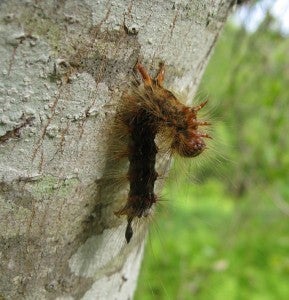Caterpillar update 6/25/16
I have some good news and some bad news about caterpillars. First for the good news: gypsy moth caterpillars have practically finished feeding, and forest tent caterpillars are finished as well (eastern tent caterpillars finished several weeks ago). Many gypsy moth caterpillars have died from the two diseases that typically keep gypsy moth populations under control, the fungal disease Entomophaga maimaiga, and the viral disease NPV, a nucleopolyhedrosis virus.
The bad news is many gypsy moth caterpillars have survived and started pupating. This May and June have been incredibly (painfully) dry again and both gypsy moth diseases require high humidity to spread from caterpillar to caterpillar. In a couple of weeks gypsy moths will emerge to lay egg masses which will hatch next spring.
What can you do now? Look on tree trunks and destroy gypsy moth pupae and caterpillars that are covering themselves in silk. Look at the pictures to see the difference between healthy caterpillars and ones that have died from diseases.
Some areas of Rhode Island were heavily infested with forest tent caterpillars this spring (not to be confused with eastern tent caterpillars that make visible tents). Right now forest tent caterpillars are cocoons folded inside leaves or pine needles. If you saw forest tent caterpillars at your property this spring, I suggest you prune out as many forest tent caterpillar cocoons as you can. See attached pictures.
2016 has been quite a year for caterpillars!
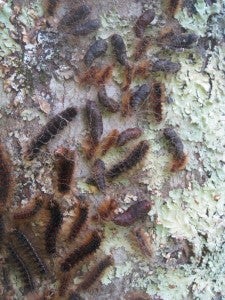
Mature gypsy moth caterpillars and pupae
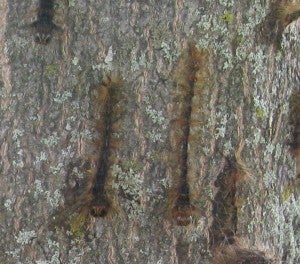
Gypsy moth caterpillars dead from Entomophaga
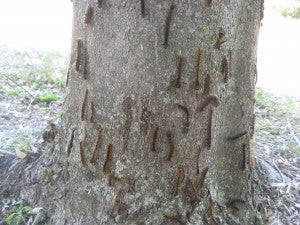
Gypsy moth caterpillars – most are dead here
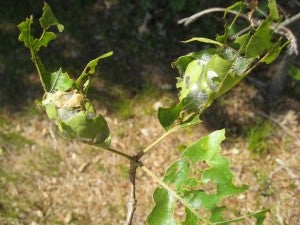
Forest tent caterpillar cocoons folded in leaves
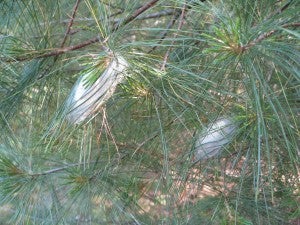
Forest tent caterpillar cocoons on white pine
 Home
Home Browse
Browse Close
Close Events
Events Maps
Maps Email
Email Brightspace
Brightspace eCampus
eCampus



